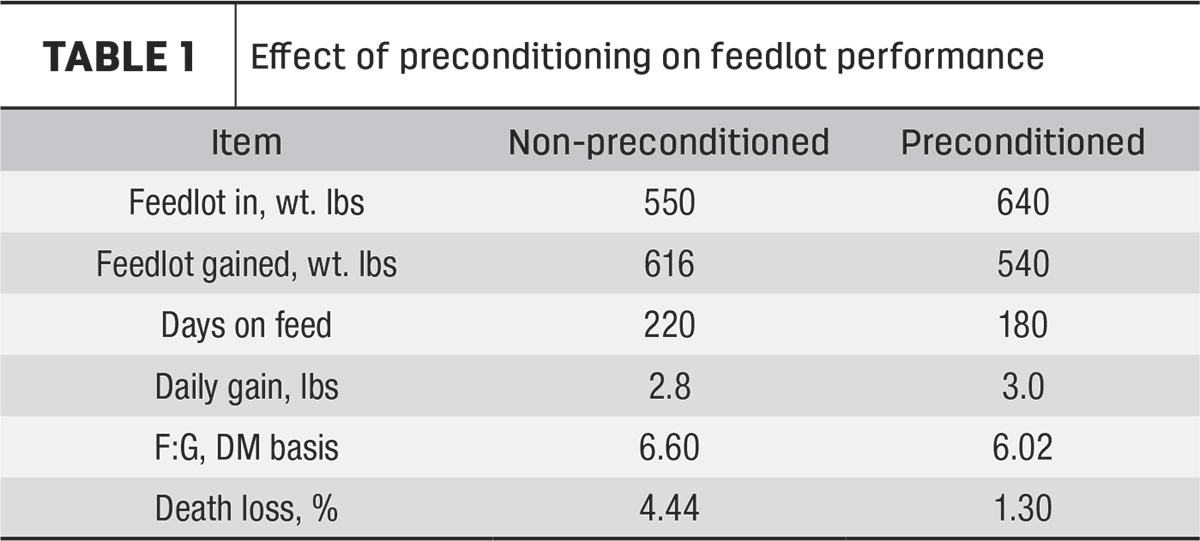When the summer months come to an end and the fall work begins, it is imperative to remember the importance of preconditioning calves prior to selling. As the price of cattle continues to trend upward for the seller, there is an increased risk to the buyer. Since the purchase price of calves is currently high, there can be a wide price spread between the purchase price of cattle that came from a good vaccination and health program versus cattle that have not.
The term “preconditioning” may have a different meaning between location and operations. Preconditioning cattle may include 45 days of weaning, vaccinations, deworming and dehorning. However, when producers precondition calves, there are many considerations for producers such as feed availability, pen size, labor and vaccination protocol. Whether calves are weaned or not prior to being sold or entering a yard, an important part of preconditioning is the vaccinations to decrease sickness.
Bovine respiratory disease complex (BRD) is the leading cause of death and illness in feedlot cattle, according to the USDA. Vaccinating cattle prior to entering the feedlot will lead to a decrease in BRD. A study on the effects of preconditioning cattle found there was a 71% increase in death loss in non-preconditioned cattle versus cattle that were preconditioned (Table 1).

In a review of data published from 1994 to 2012, sale lots of cattle that were certified vaccinated versus cattle that were not vaccinated brought a higher price at auction (Table 2). In this publication, the requirements of certification did vary. Over the 18 years of data, the vaccinated calves had an average added premium of $2.91 per hundredweight (cwt). In the last three years of data, the average added premium for vaccinated cattle was $5.43 per cwt.

Not only does preconditioning increase animal health and performance in the yard, it also builds a reputation for your cattle. Properly vaccinated and weaned calves create the kind of trusted cattle demanded by both order buyers and cattle feeders. Order buyers recognize the added value of calves that are at a lower risk for disease and death that have been preconditioned.
The fall is a busy time for all producers, and preconditioning cattle requires added labor. However, it is important to remember there is value to preconditioning cattle for herd health, adding value during the time of the sale and enhancing the reputation of the cattle producer.
References omitted but are available upon request by sending an email to the editor.












